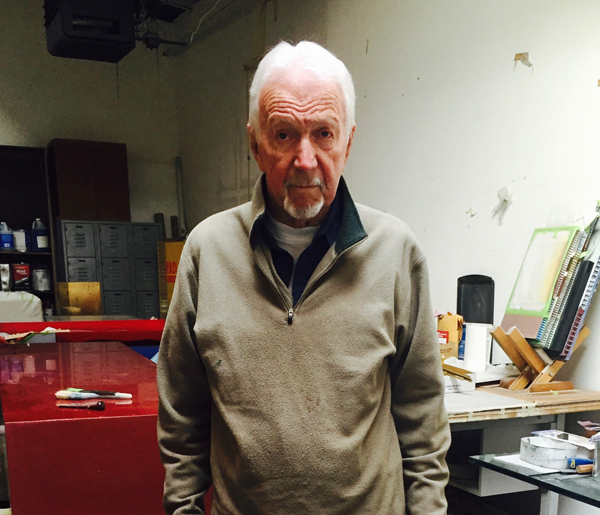Jack Brogan is a fabricator. He makes things. Challenged with the whim, fancy and far-reaching concepts of the artist, Brogan, 86, will produce a dimensional object. His influence will never be truly known nor appreciated.
ARTILLERY: Your proficiency in new materials and manufacturing processes has been in lockstep with the innovations of the aerospace industry. So, what’s new?
BROGAN: A lot. New plastics are quickly replacing metals. Steel fishing line was once the standard for strength, but now plastics are 15 times stronger than steel. 3D printing is moving fast. We can print glass that is stronger than glass. NASA has been developing the printing technology for the last 10 to 15 years and it is becoming common in the marketplace. Four years ago, a printer was a hundred grand. Now you can buy one for $2,000. I’ve gotten several artists started up with the 3D printing. I got John Eden into sculpture. That’s how he produced Larry Bell’s Glass Fedora.
As a fabricator, how have you seen sculpture change from the ’60s to now? What is new in the studios?
Well, it’s gone full circle. I’m seeing more Minimalist sculpture. Younger people are finding a place with the ’60s and ’70s. They want to know about polyester and plastics. The Getty show “Pacific Standard Time” was a big influence. Zwirner and Tim Nye in New York have been showing California people and that has seen an impact. New artists are recreating the same works. The same shapes. Sculpture is not so much about innovation.
Jack, you are a magnet. Your expertise and process is highly valued. Can you comment on who and what people are seeking today and why?
The relationship has changed. Now, it doesn’t work the same way. Rather than develop a piece, artists now just want me to do it. To make it. They don’t want to do it themselves. The experience isn’t there… everyone’s got authority and credentials. A lot of museums and conservators ask me how to do something. They start out telling me about their degrees and expertise and how they are going to repair and fix something. Then I simply tell them, “You can’t do that. You have the wrong materials.”
What is the production in your studio today? How much is new work and how much is repair and rehab?
About 50/50. Repairs keep me busy. I always have a few McCracken planks to fix. Corners chip. Color-matching is hard. Colors change with heat, so we have to try up to 10 times to get it right. Larry Bell’s glass sculptures are tricky. I only take them totally apart if I have to. In ’67, he used airplane glue, which was clear but has turned brown over time. Some need new metal, as the old pieces get chipped, pitted and anodized. Craig Kaufman pieces come in broken, so we patch them up and send ‘em back. It’s a long process. We need to glue the acrylic so you can’t see the break. The art and the ideas just keep rolling.


